In a tranquil Japanese garden, one can explore the art of mindful wagashi making and the elegance of a traditional tea ceremony. Participants engage in crafting delicate nerikiri sweets, using natural dyes that reflect the beauty of the seasons, while also learning the significance of each gesture in the tea ceremony. This experience isn’t just about creating treats; it’s a moment to connect with nature and appreciate the rich cultural heritage of Japan. But what truly makes this journey special is how it invites individuals to embrace mindfulness—something that can reshape their understanding of these timeless traditions.
Experience Overview

In the serene setting of Ikegami Baien garden, participants enjoy the art of making traditional Japanese sweets, or nerikiri, while also experiencing a quintessential tea ceremony.
Over two hours, they learn hands-on techniques for crafting delicate sweets shaped like Mt. Fuji and adorned with seasonal flowers. Guided by an English-speaking instructor, the private group enjoys a unique blend of cultural appreciation and culinary skill.
For $103.79, the experience includes a stroll through the beautiful garden, tastings of matcha and sweets, and all necessary materials.
With free cancellation up to 24 hours in advance, it’s a flexible option for anyone enthusiastic to explore Japanese traditions. Participants leave with not just sweets, but lasting memories of this immersive experience.
You can check availability for your dates here:Mindfulness in Crafting
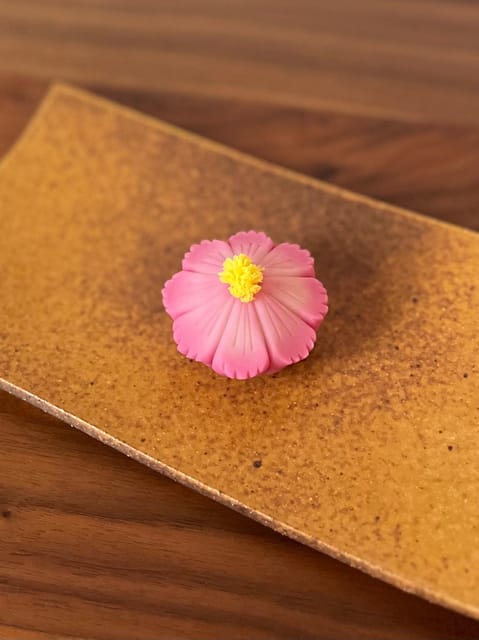
How can the act of crafting nerikiri sweets enhance one’s sense of mindfulness?
When participants enjoy the delicate process of making these traditional Japanese treats, they engage fully with the present moment. The vibrant colors of the ingredients, the subtle scents of the flavors, and the gentle textures all invite a sensory journey.
Each step requires focus, encouraging individuals to leave distractions behind and connect with their creativity. As they shape the sweets into seasonal designs, like Mt. Fuji adorned with flowers, they cultivate patience and intention.
This mindful crafting not only fosters a deeper appreciation for Japanese culture but also nurtures a sense of calm and fulfillment, leaving participants with a lasting connection to their experience.
You can also read our reviews of more tours and experiences in Tokyo.
Features of the Experience
Participants can look forward to a rich blend of hands-on experiences and cultural insights during the Mindful Wagashi Making & Tea Ceremony.
They’ll create beautiful nerikiri sweets, including a stunning Mt. Fuji adorned with seasonal flowers, guided by an English-speaking instructor.
The event also features a traditional tea ceremony, where they can savor matcha and enjoy the delicate treats they’ve made.
Along with access to a recipe and instructional video, participants get to stroll through the serene Japanese garden, enhancing their connection to nature.
Comfort is key—aprons and hand towels are provided, and they’re encouraged to wear comfy clothing.
It’s a delightful way to take in Japanese culture while practicing mindfulness.
Exploring the Japanese Garden
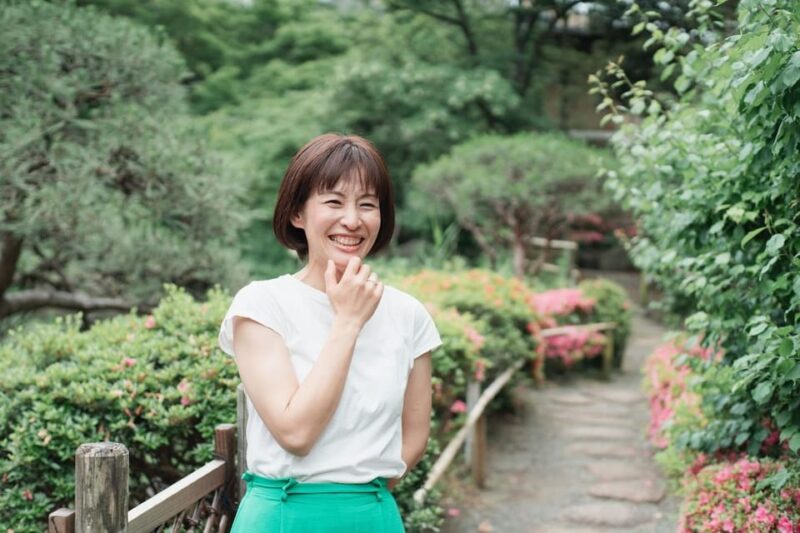
Nestled within the serene Ikegami Baien garden, the Japanese garden invites visitors to slow down and appreciate nature’s beauty.
As they stroll along the winding paths, they’ll encounter meticulously raked gravel, vibrant seasonal flowers, and tranquil koi ponds. Each element, from the delicate cherry blossoms in spring to the fiery foliage in autumn, tells a story of Japan’s changing seasons.
Visitors often pause to breathe in the fragrant air, focusing on the sounds of rustling leaves and chirping birds. This environment fosters mindfulness, encouraging a deeper connection with nature.
With every step, they engage in a cultural experience that honors tradition, reminding them that simplicity can be profoundly enriching. It’s a perfect prelude to their upcoming wagashi-making adventure.
Making Traditional Nerikiri
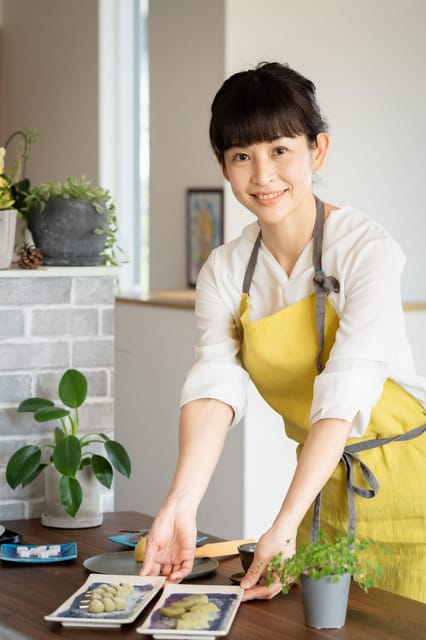
Creating traditional nerikiri is a delightful journey into Japan’s culinary artistry. Participants enjoy the world of these beautiful sweets, using their hands to mold colorful dough into stunning shapes. The process not only engages creativity but also encourages mindfulness.
Here are some key steps involved:
-
Ingredients: Start with sweetened bean paste, a staple in nerikiri.
-
Coloring: Use natural food dyes to achieve vibrant hues, reflecting the seasons.
-
Shaping: Craft delicate designs, often inspired by nature—like cherry blossoms or Mt. Fuji.
-
Presentation: Serve the finished pieces with elegance, enhancing the overall experience.
Through this practice, participants gain a deeper appreciation for Japanese culture and the artistry behind these delightful confections.
More Great Tours NearbyParticipating in the Tea Ceremony
The tea ceremony offers a serene opportunity to appreciate the art of Japanese tradition while connecting with the present moment.
Participants find themselves enveloped in a peaceful atmosphere, where every gesture is intentional and meaningful. As they take part in the ritual, they learn about the significance of each element, from the carefully whisked matcha to the delicate serving of sweets.
The instructor guides them through the process, fostering an appreciation for the meticulous nature of this practice. Engaging with the tea and the surroundings, participants become more aware of their senses, noticing the aroma, taste, and even the sounds of nature.
This unique experience not only deepens their understanding of Japanese culture but also encourages mindfulness and reflection.
Important Guidelines and Tips
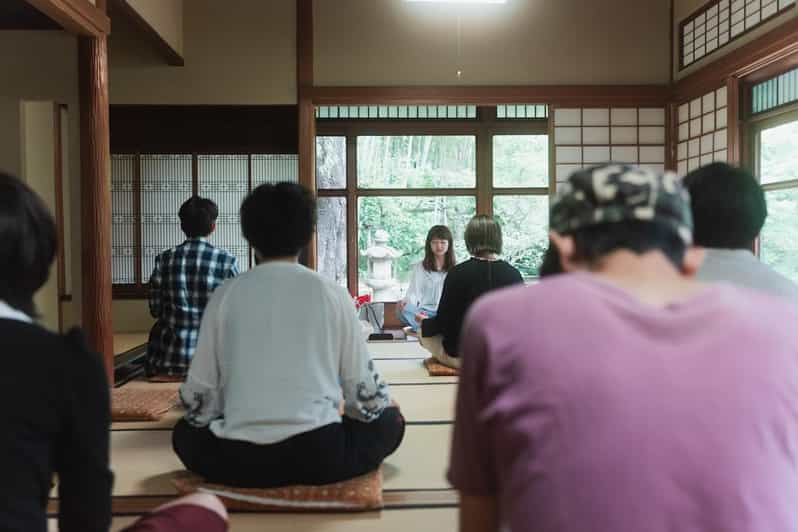
Before diving into the delightful experience of wagashi making and the tea ceremony, participants should keep a few important guidelines in mind to secure a smooth and enjoyable time.
Here are some essential tips:
-
Age Limits: This experience isn’t suitable for children under 7 or individuals over 95, so plan accordingly.
-
Comfort is Key: Wear comfortable clothes and avoid short skirts, as you will sit on tatami mats.
-
Bring Essentials: Don’t forget your camera to capture those beautiful moments!
-
Respect the Space: Leave pets, strollers, smoking, alcohol, and drugs at home to maintain the serene atmosphere.
Keeping these tips in mind will enhance everyone’s experience and secure a harmonious connection with Japanese culture.
Additional Experience Insights
Experiencing wagashi making and the tea ceremony offers a unique opportunity to engage with Japanese culture on a deeper level.
Participants can savor the tranquility of the Ikegami Baien garden while creating their own nerikiri sweets, which not only taste delightful but also reflect the beauty of nature. The hands-on approach fosters mindfulness, encouraging individuals to connect with their surroundings and themselves.
Remember, these delicate sweets are best enjoyed on-site, so plan accordingly. Dressing comfortably is essential, especially since you’ll be sitting on tatami mats. Don’t forget your camera to capture the stunning scenery!
With an English-speaking instructor guiding you, it’s an enriching experience that blends tradition with personal creativity, making it truly special.
Frequently Asked Questions
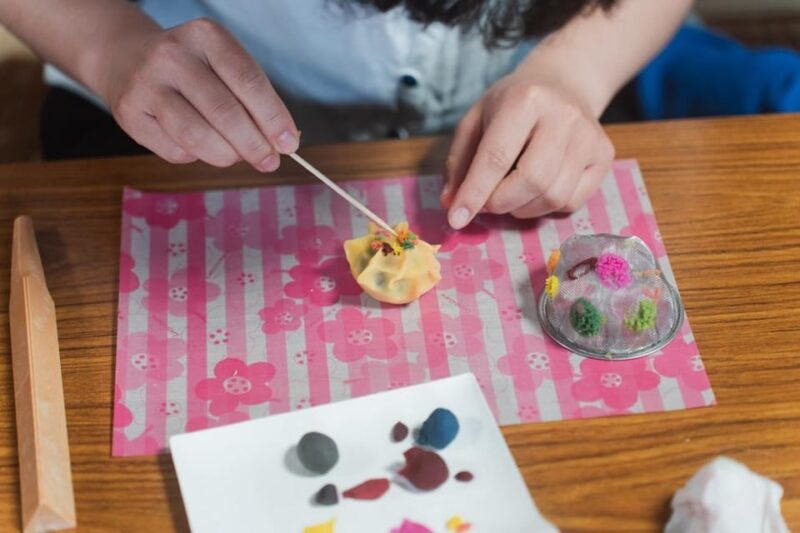
What Should I Wear for the Experience?
For the experience, she should wear comfortable clothes, avoiding short skirts. It’s best to dress modestly, as you will sit on tatami mats. A casual outfit allows for ease and enjoyment during the activity.
Is There an Age Limit for Participants?
The experience has an age limit; it’s not suitable for children under 7. Participants should be mindful of this guideline to guarantee everyone enjoys a culturally enriching and safe environment during the activity.
Can I Take the Sweets Home?
She can’t take the sweets home easily since they’re delicate. It’s best to enjoy them on-site, ensuring they maintain their quality. Participants should savor the experience rather than worry about transporting fragile treats.
Are There Any Dietary Restrictions for the Tea Ceremony?
She wondered about dietary restrictions for the tea ceremony. While traditional ingredients are used, it’s best to inform the instructor beforehand. They’ll accommodate specific needs, ensuring everyone enjoys this cultural experience without worry.
How Long Is the Entire Experience?
The entire experience lasts two hours. Participants engage in hands-on activities, connect with nature, and embrace mindfulness, making it a fulfilling cultural journey that combines creativity and tranquility, all within a beautiful setting.
Recap
In summary, this mindful wagashi making and tea ceremony experience offers a unique way to connect with Japanese culture while enjoying the beauty of nature. Participants leave with not only delicious nerikiri sweets but also a deeper appreciation for the artistry behind them. By embracing the tranquility of the garden and the meditative process of crafting, everyone can create cherished memories that last long after the sweets are gone. It’s a delightful journey for both the palate and the soul!
You can check availability for your dates here:More Tour Reviews in Tokyo
- Tokyo Traditional Food Tour in a Small Group
- Private 1 Day Tour to Nikko: Onsen, UNESCO Shrines and Nature
- Tokyo 6 Hr Private Guided Tour & Rickshaw Experience
- Private Breakfast Tour at Tsukiji Outer Market
- Japan Autumn & Winter Illuminations Discovery Tour (12 Days)
- Old and New Tokyo Full Day Private Tour
Not for you? Here's more nearby things to do in Tokyo we have reviewed
- Tokyo Traditional Food Tour in a Small Group
- Private 1 Day Tour to Nikko: Onsen, UNESCO Shrines and Nature
- Tokyo 6 Hr Private Guided Tour & Rickshaw Experience
- Private Beginner Japanese Cooking Class Near Tokyo
- Private Breakfast Tour at Tsukiji Outer Market
- Japan Autumn & Winter Illuminations Discovery Tour (12 Days)
- Old and New Tokyo Full Day Private Tour
- 【Private】Sushi & Ramen Cooking & Sake Set in Tokyo!(+Recipe)
- Private 1 Day Tour to Kamakura: Sea, Temples, and Coastal Scenery
- Tokyo Castle & Imperial Palace , Historical Walking Tour
- One Way Shuttle Van Transfer, Tokyo⇔Hakone Area
- Barrier Free Transportation in Hakone, No Guide (Tokyo Dep.)
